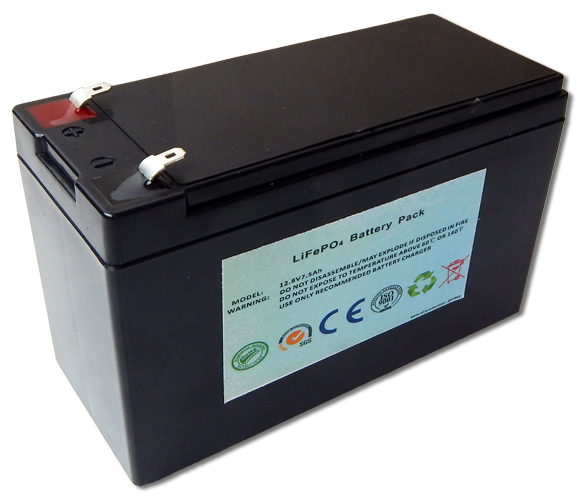Very doubtful. LVD's just monitors cell or pack voltages, not current.
It should. The controller needs a load, some current flowing to maintain controlled voltage regulation
Any load. It does come with a catch. It drains the battery. All your issues revolve around a battery with a HVC circuit disconnecting the charger. How do I know you have HVC and LVD? Because your battery says it does. In your case the term PCM = Protection Circuit Module. . Here is another battery similar to yours, a 4S 6.6 AH with two ports, a charge port and discharge port with PCM. Sound familiar?
One without a HVC circuit. Your battery module has a HVC as part of the PCM. It is unnecessary automation which causes more problems than it is worth in my opinion. It makes it incompatible with Solar. I assume you want something modular in a box right? Something on the lines of a Power Stream 12 volt 7 AH LiFe battery. They are drop in replacements for AGM batteries in Alarm Systems. It has a crude BMS with balance boards and LVD. However no HVC and will work just like a regular battery. It can be charged as high as 1C and discharged at 2C continuous. It will work with any solar charge controller or battery charger made for lead acid. Ideally you want a CC/CV charger set to 13.8 to
14.6 volts. Just what the Doctor ordered.
It should. The controller needs a load, some current flowing to maintain controlled voltage regulation
Any load. It does come with a catch. It drains the battery. All your issues revolve around a battery with a HVC circuit disconnecting the charger. How do I know you have HVC and LVD? Because your battery says it does. In your case the term PCM = Protection Circuit Module. . Here is another battery similar to yours, a 4S 6.6 AH with two ports, a charge port and discharge port with PCM. Sound familiar?
One without a HVC circuit. Your battery module has a HVC as part of the PCM. It is unnecessary automation which causes more problems than it is worth in my opinion. It makes it incompatible with Solar. I assume you want something modular in a box right? Something on the lines of a Power Stream 12 volt 7 AH LiFe battery. They are drop in replacements for AGM batteries in Alarm Systems. It has a crude BMS with balance boards and LVD. However no HVC and will work just like a regular battery. It can be charged as high as 1C and discharged at 2C continuous. It will work with any solar charge controller or battery charger made for lead acid. Ideally you want a CC/CV charger set to 13.8 to
14.6 volts. Just what the Doctor ordered.


Comment